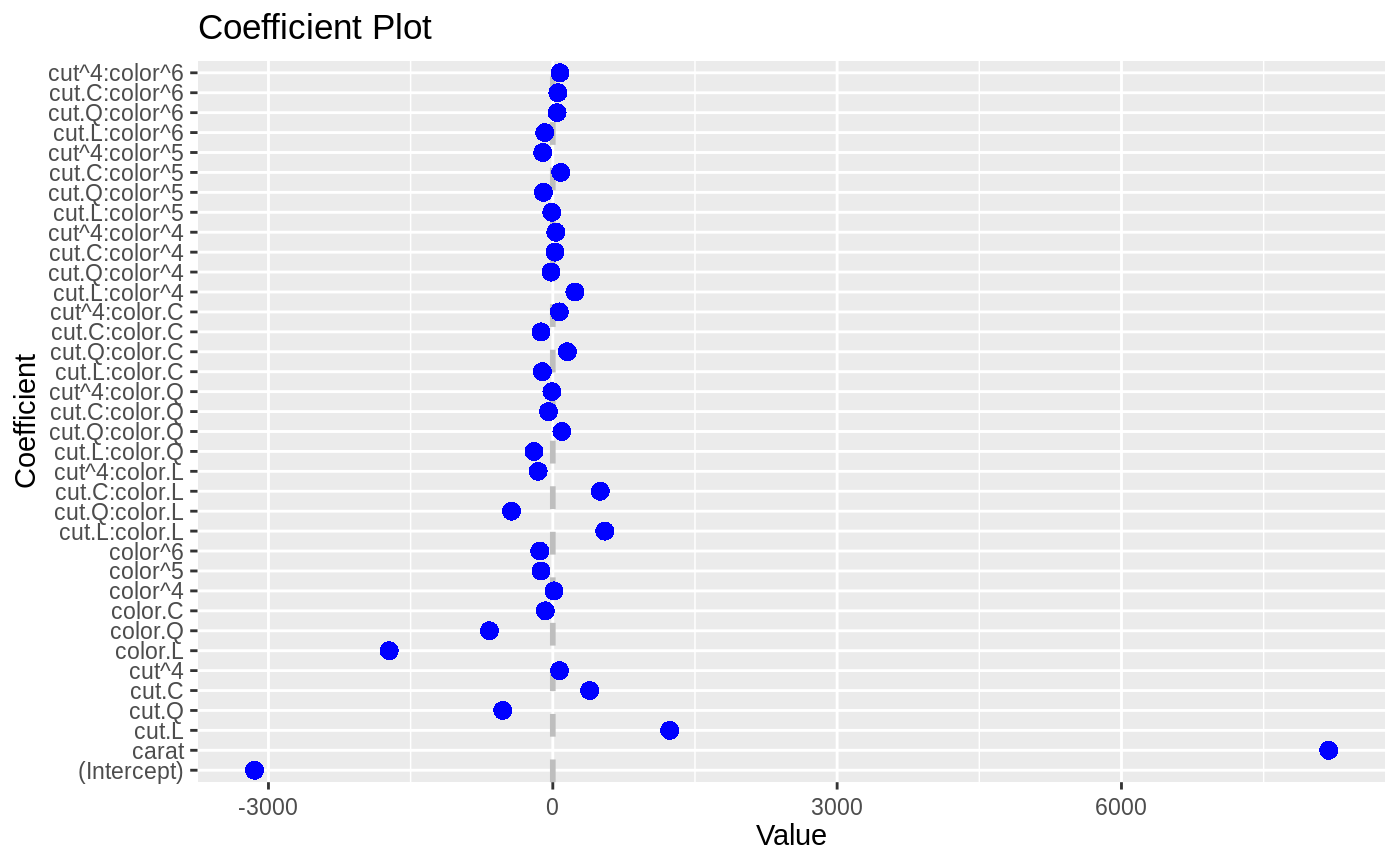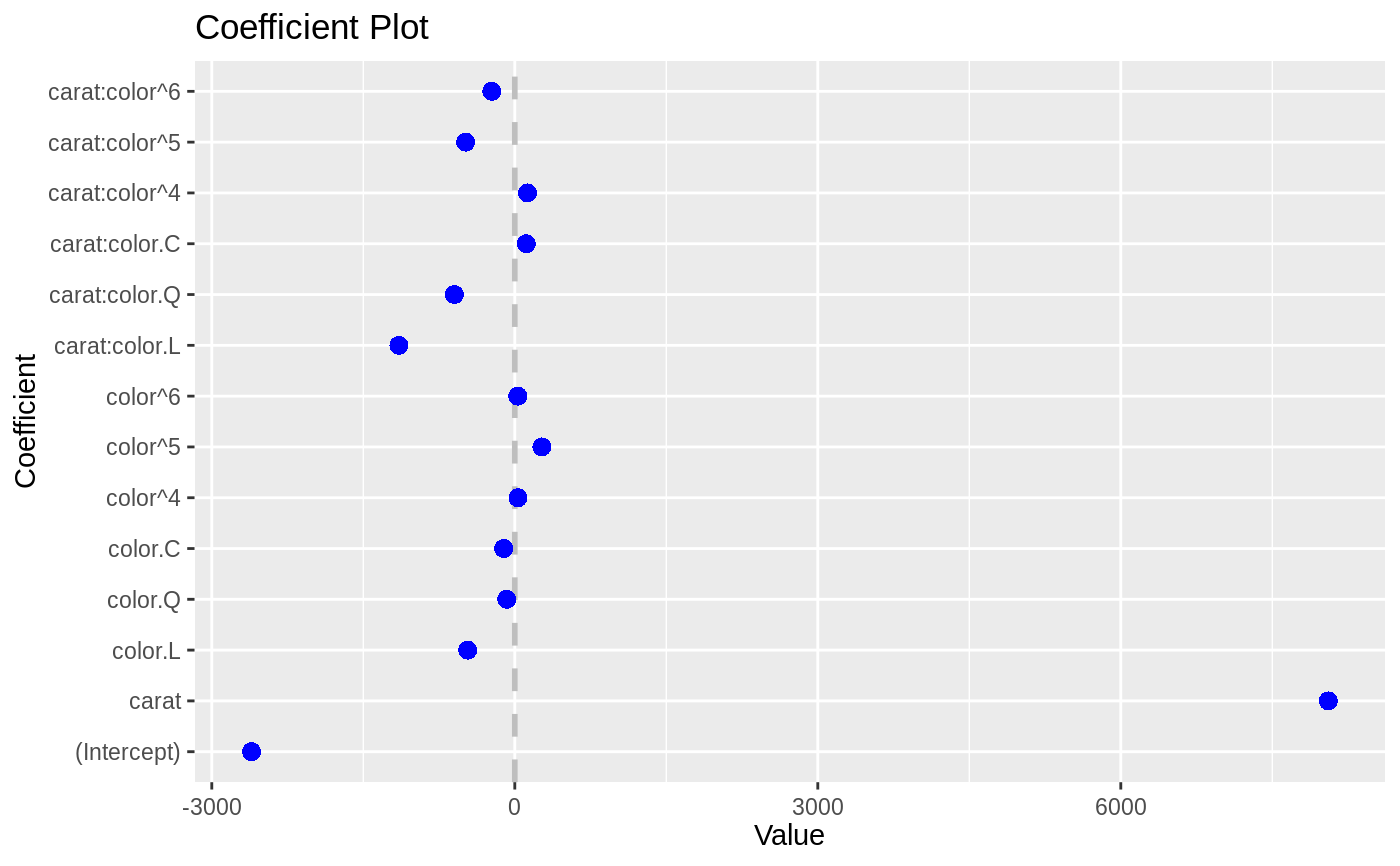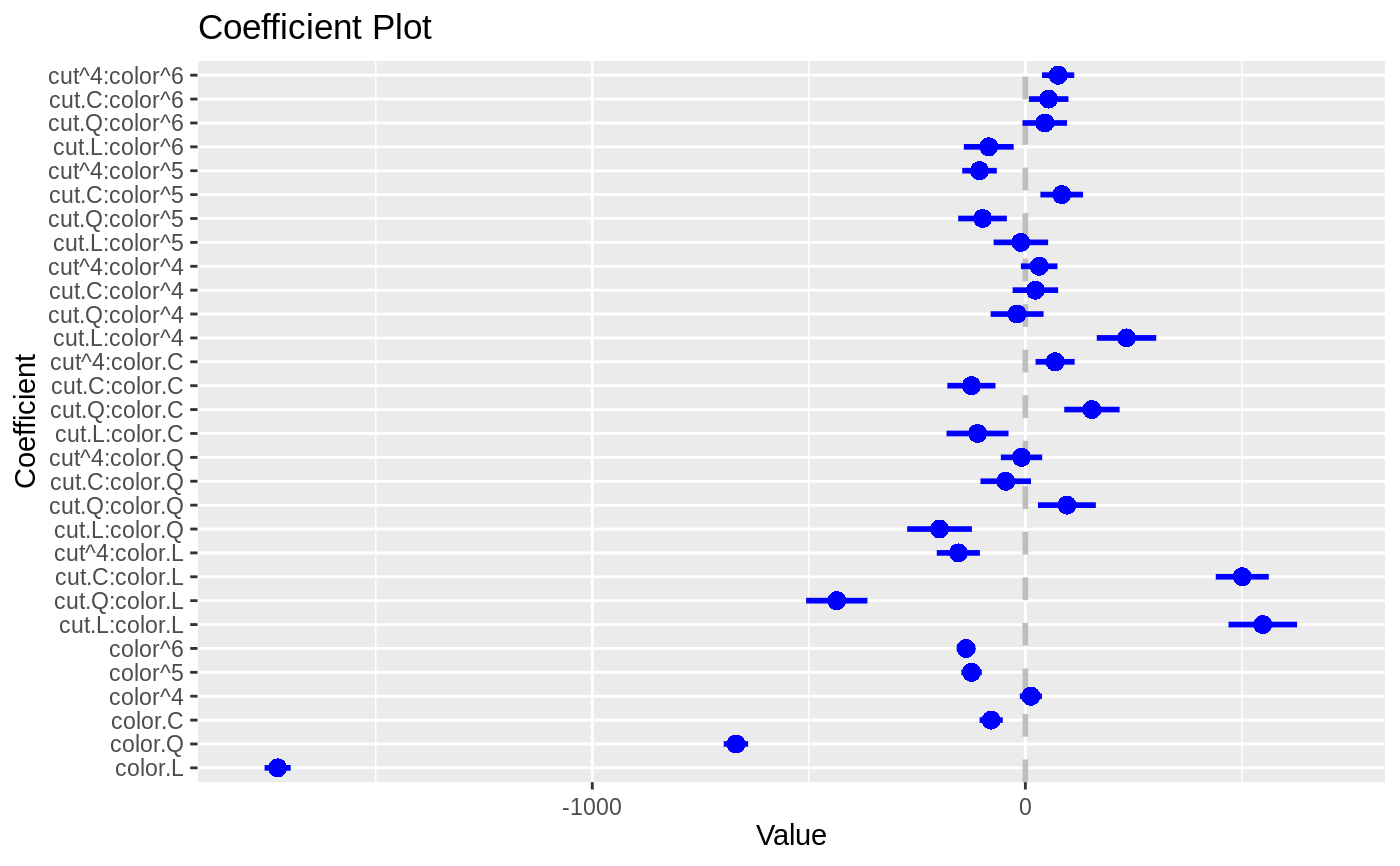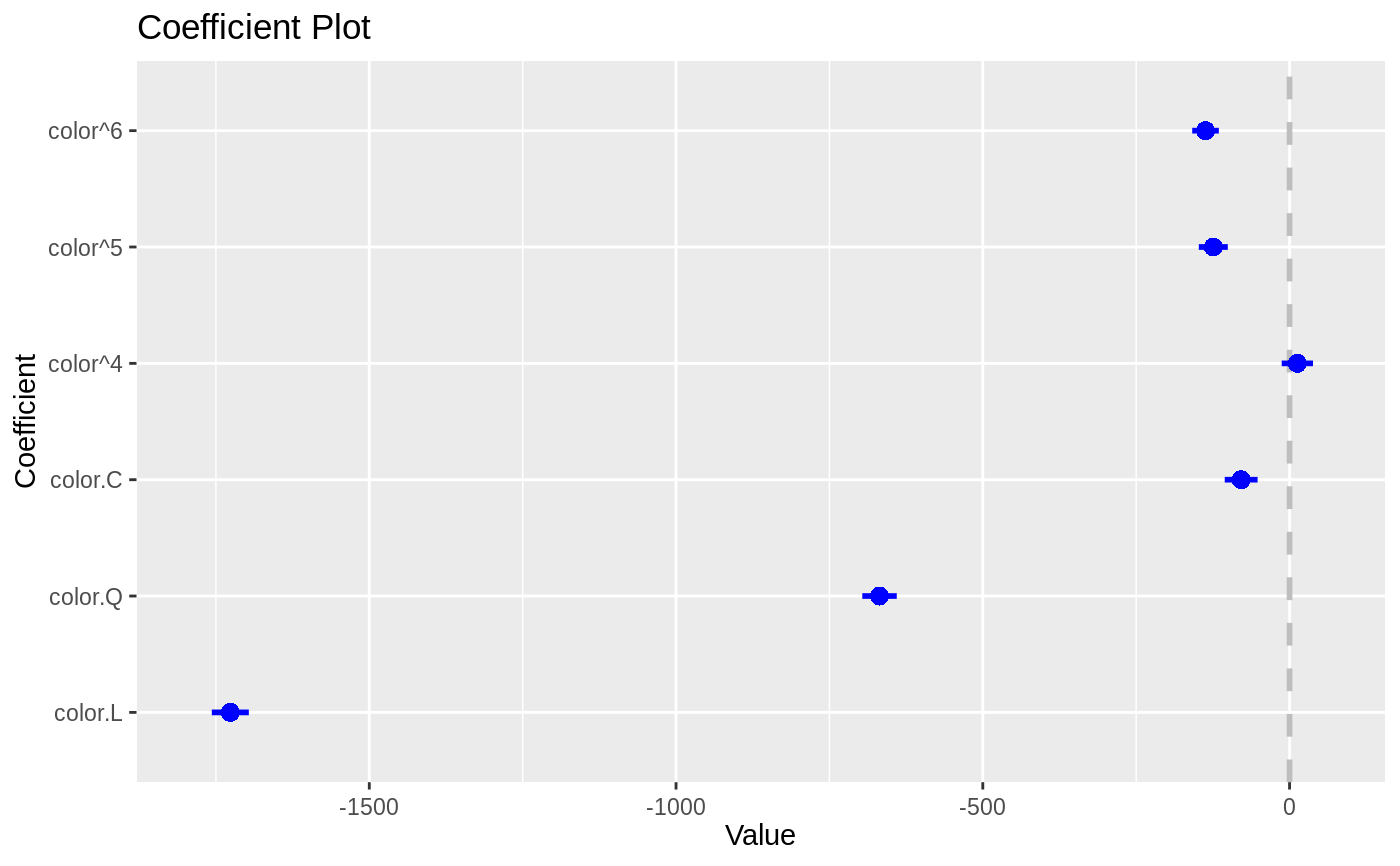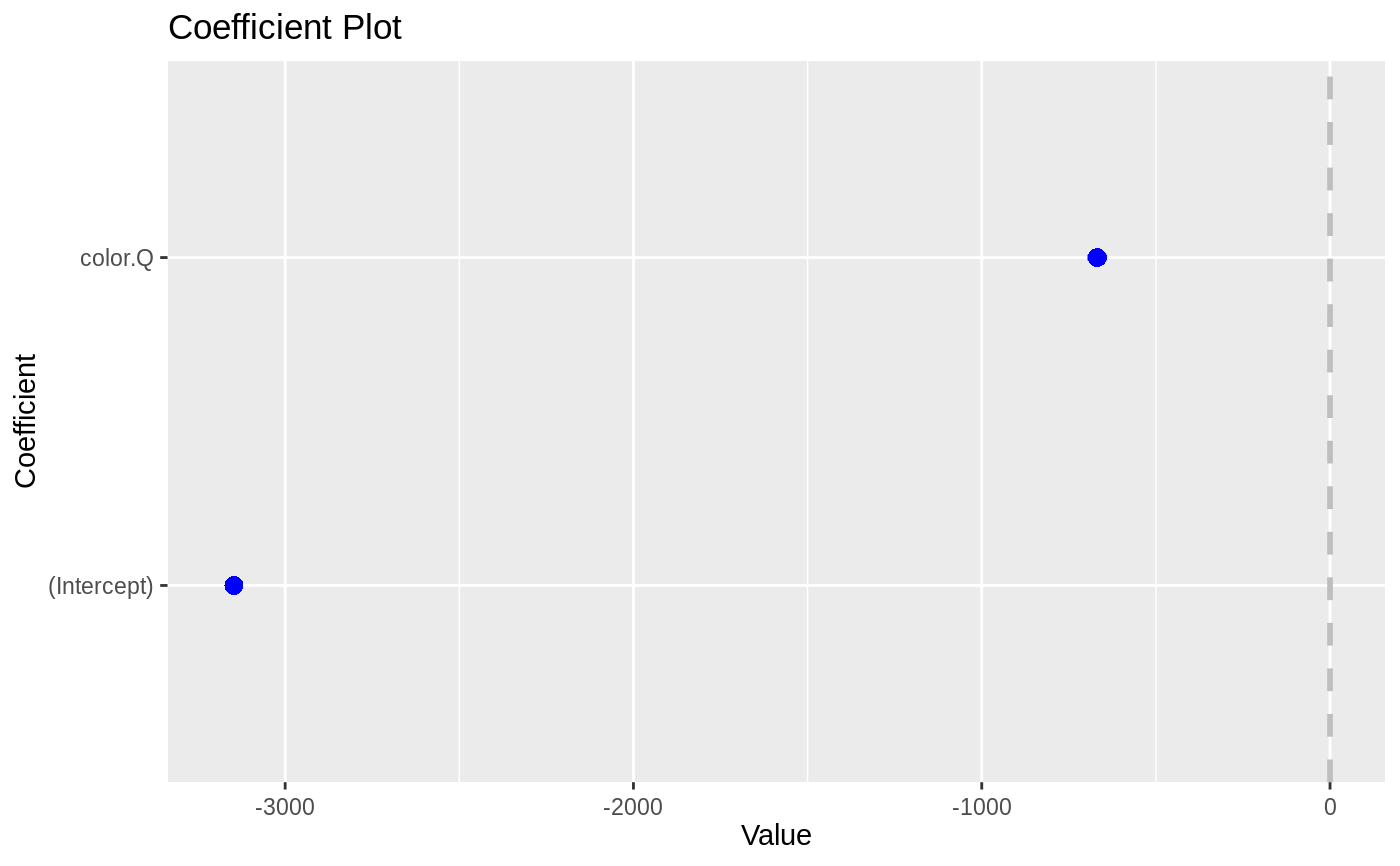coefplot.default
coefplot.default.RdDotplot for coefficients
# S3 method for default coefplot(model, title = "Coefficient Plot", xlab = "Value", ylab = "Coefficient", innerCI = 1, outerCI = 2, lwdInner = 1, lwdOuter = 0, pointSize = 3, color = "blue", shape = 16, cex = 0.8, textAngle = 0, numberAngle = 0, zeroColor = "grey", zeroLWD = 1, zeroType = 2, facet = FALSE, scales = "free", sort = c("natural", "magnitude", "alphabetical"), decreasing = FALSE, numeric = FALSE, fillColor = "grey", alpha = 1/2, horizontal = FALSE, factors = NULL, only = NULL, shorten = TRUE, intercept = TRUE, interceptName = "(Intercept)", coefficients = NULL, predictors = NULL, strict = FALSE, trans = identity, newNames = NULL, plot = TRUE, ...)
Arguments
| model | The model to plot. |
|---|---|
| title | The name of the plot, if NULL then no name is given |
| xlab | The x label |
| ylab | The y label |
| innerCI | How wide the inner confidence interval should be, normally 1 standard deviation. If 0, then there will be no inner confidence interval. |
| outerCI | How wide the outer confidence interval should be, normally 2 standard deviations. If 0, then there will be no outer confidence interval. |
| lwdInner | The thickness of the inner confidence interval |
| lwdOuter | The thickness of the outer confidence interval |
| pointSize | Size of coefficient point |
| color | The color of the points and lines |
| shape | The shape of the points |
| cex | The text size multiplier, currently not used |
| textAngle | The angle for the coefficient labels, 0 is horizontal |
| numberAngle | The angle for the value labels, 0 is horizontal |
| zeroColor | The color of the line indicating 0 |
| zeroLWD | The thickness of the 0 line |
| zeroType | The type of 0 line, 0 will mean no line |
| facet | logical; If the coefficients should be faceted by the variables, numeric coefficients (including the intercept) will be one facet. Currently not available. |
| scales | The way the axes should be treated in a faceted plot. Can be c("fixed", "free", "free_x", "free_y"). Currently not available. |
| sort | Determines the sort order of the coefficients. Possible values are c("natural", "normal", "magnitude", "size", "alphabetical") |
| decreasing | logical; Whether the coefficients should be ascending or descending |
| numeric | logical; If true and factors has exactly one value, then it is displayed in a horizontal graph with continuous confidence bounds. Currently not available. |
| fillColor | The color of the confidence bounds for a numeric factor. Currently not available. |
| alpha | The transparency level of the numeric factor's confidence bound. Currently not available. |
| horizontal | logical; If the plot should be displayed horizontally. Currently not available. |
| factors | Vector of factor variables that will be the only ones shown |
| only | logical; If factors has a value this determines how interactions are treated. True means just that variable will be shown and not its interactions. False means interactions will be included. |
| shorten | logical or character; If |
| intercept | logical; Whether the Intercept coefficient should be plotted |
| interceptName | Specifies name of intercept it case it is not the default of "(Intercept"). |
| coefficients | A character vector specifying which factor coefficients to keep. It will keep all levels and any interactions, even if those are not listed. |
| predictors | A character vector specifying which coefficients to keep. Each individual coefficient can be specified. Use predictors to specify entire factors. |
| strict | If TRUE then predictors will only be matched to its own coefficients, not its interactions |
| trans | A transformation function to apply to the values and confidence intervals. |
| newNames | Named character vector of new names for coefficients |
| plot | logical; If the plot should be drawn, if false then a data.frame of the values will be returned |
| ... | Arguments passed on to other functions |
Value
If plot is TRUE then a ggplot object is returned. Otherwise a data.frame listing coefficients and confidence bands is returned.
Details
A graphical display of the coefficients and standard errors from a fitted model
coefplot is the S3 generic method for plotting the coefficients from a fitted model.
This method also plots coefficients from glm (using coefplot.lm) and rxLinMod models (through a redirection from coefplot.rxLinMod)
See also
Examples
#> # A tibble: 6 x 10 #> carat cut color clarity depth table price x y z #> <dbl> <ord> <ord> <ord> <dbl> <dbl> <int> <dbl> <dbl> <dbl> #> 1 0.23 Ideal E SI2 61.5 55 326 3.95 3.98 2.43 #> 2 0.21 Premium E SI1 59.8 61 326 3.89 3.84 2.31 #> 3 0.23 Good E VS1 56.9 65 327 4.05 4.07 2.31 #> 4 0.290 Premium I VS2 62.4 58 334 4.2 4.23 2.63 #> 5 0.31 Good J SI2 63.3 58 335 4.34 4.35 2.75 #> 6 0.24 Very Good J VVS2 62.8 57 336 3.94 3.96 2.48model1 <- lm(price ~ carat + cut*color, data=diamonds) model2 <- lm(price ~ carat*color, data=diamonds) coefplot(model1)coefplot(model2)coefplot(model1, predictors="color")coefplot(model1, predictors="color", strict=TRUE)
